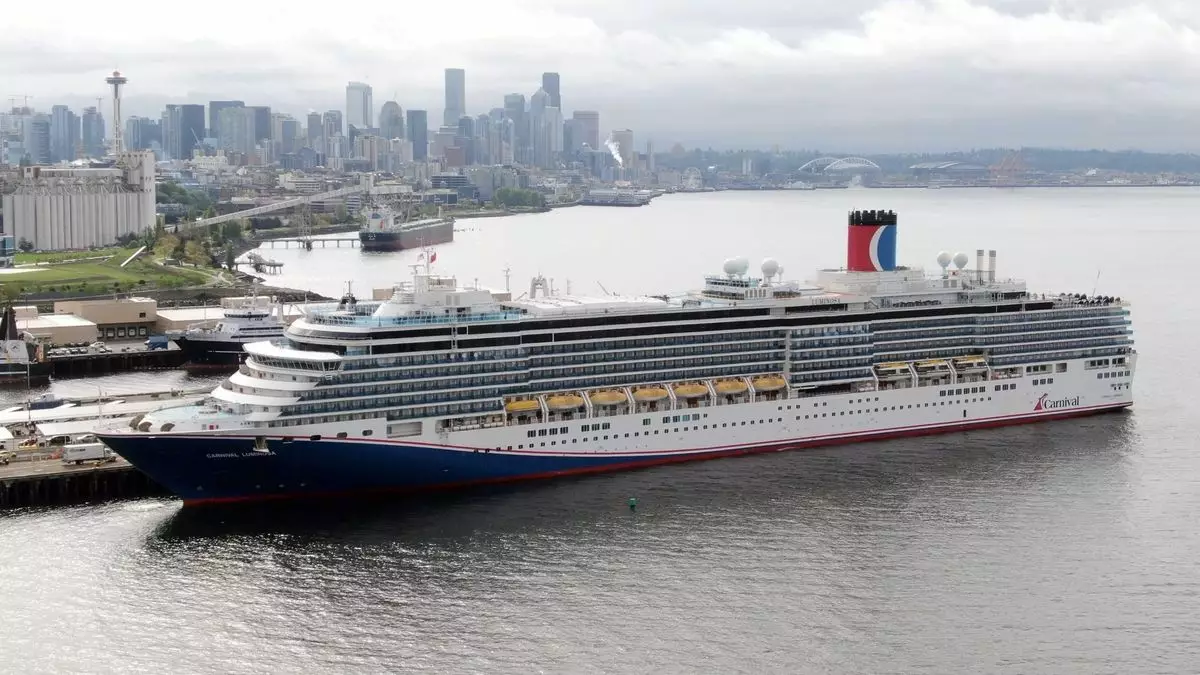Amid the turbulent waters of economic uncertainty and geopolitical tensions, Carnival Corp. has managed to maintain a firm grip on the cruising market, as highlighted by CEO Josh Weinstein. The company’s first-quarter financial results are nothing short of impressive, showcasing a revenue of $5.8 billion, which marks a staggering increase of over $400 million compared to the same period last year. This kind of growth, especially in the travel industry still recovering from the pandemic, is not just a fluke; it reflects a robust consumer demand that is resonating across various markets.
Weinstein’s assertion of “pretty fantastic” performance is substantiated by the high close-in demand and “tremendous” onboard spending, which has seen a remarkable 10% growth year-over-year. It’s heartening to see consumers not merely returning to cruises but demonstrating a strong willingness to spend—indicating an optimistic outlook for leisure travel. The figures suggest that people are more than eager to invest in experiences, reinforcing a key trend within the travel sector post-pandemic.
Occupancy Rates and Booking Trends: A Record Wave Season
The success of Carnival Corp. is also exemplified by the reported occupancy rates. The company achieved 103% occupancy this quarter, slightly up from 102% in the previous year. This increase might seem modest, but it’s significant in the context of an industry that faced substantial occupancy challenges during the pandemic. Moreover, the success of this year’s Wave Season—the period traditionally marked by high booking activity—led to record-setting bookings extending into 2025. Levine’s commentary on the historic 80% inventory booked for 2025 at record pricing reflects not merely survival but genuine growth within the company’s operational model.
Debt Strategy and Operational Resilience
While revenue highlights the company’s operational success, the financial backstory involves strategic debt management. Carnival Corp. reported a net loss of $78 million, attributed to expenses incurred from debt modifications. Nonetheless, in a remarkable pivot towards financial health, the company successfully refinanced $5.5 billion of debt, yielding an impressive annualized interest savings of $145 million and a net debt reduction of $500 million. Such proactive financial maneuvers portray Carnival Corp. not only as a resilient entity but also as one that is adaptable and agile when navigating a complicated economic landscape.
Analyzing the broader implication of these moves, it does raise questions about the sustainability of this robust performance. Will consumers continue to flock toward cruising with the same fervor, or are we on the precipice of a potential downturn? While Weinstein expresses a firm belief in sustained consumer strength and shows no signs of concern for brand-specific issues, analysts like Patrick Scholes suggest that although the current booking pace may not be as robust as seen in December, pricing remains consistent with market expectations.
In an industry riddled with volatility, Carnival Corp.’s strategies demonstrate an encouraging synergy between consumer demand, operational effectiveness, and fiscal responsibility. As Carnival sails forth, its current trajectory offers a glimmer of hope not just for its stakeholders but for the wider travel industry as it continues to navigate through uncertain waters.


Leave a Reply